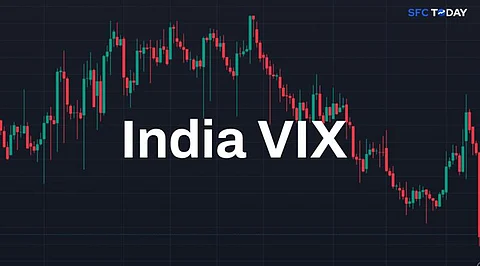

India VIX, the market's "fear index," is in the lead for volatility reading and investor sentiment in 2025. From early-bullish half volatilities to shocking serenity in summer months, the message of the index became increasingly more nuanced. With Q3 underway, what the VIX is communicating becomes increasingly significant to investors who want to ride new trends and global uncertainties into the light.
The India VIX is a measure of anticipated volatility in the Nifty 50 for the 30-day period on the basis of logical inference from the options prices. When the VIX goes up, markets anticipate disruption—usually in times of downturn. When it declines, calmness, reflecting optimism in investors and smaller price movements. In 2025, the VIX has been fluctuating between 12 and 16, indicating the stability of the index even during record highs in the market.
Sudden bouts of volatility occurred in early 2025. A 66% one-day leap, as well as subsequent rally to about 23 with peaks in geopolitical and trade tensions. In contrast, when India-Pakistan worsened into a May ceasefire, the VIX dropped more than 24% in three sessions to about 17, as soon as relief-kissing sentiment. Moving into June, the index dropped by close to 10% over two days of trading following RBI surprise 50 bps cut in the rate, settling at near 15.
India VIX in mid-July stood at a 15-month low of around 11.2. Such recurring low levels indicate soothing market nerves, muted hedging, and reduced want to trade options. Although this is indicative of short-term tranquility, experts warn that long-term peace usually hides inherent risk likely to re-emerge in the form of steeper later moves.
Even as overall stability reigns, market participants long to see signs of periodic VIX spikes, often linked with worldwide shocks or policy statements. Periodic spikes highlight the utility of the VIX as a forward-looking risk indicator, demonstrating how quickly expectations re-price geographically and by sector.
Derivatives markets have also recorded shifting dynamics. Options premium turnover has gone down—dropping by almost 36% in a fortnight of the SEBI ban on high-frequency dealer Jane Street, when index options liquidity hit rock bottom. Thin volumes and a tranquil VIX may perhaps not always reflect underlying stability with fresh market makers.
Market experts recommend waiting patiently in the VIX's downtime. Vikas Khemani of Carnelian Capital recommends waiting patiently, keeping an eye on long-term fundamentals and structural change instead of taking knee-jerk decisions. Matt Orton concurs, recommending investors to ride through short-term volatility with exposure to long-term, high-growth sectors. Nilesh Shetty recommends selective exposure to capital goods, auto, and industrials as these are the sectors where one can find value in the present scenario.
Cautious but subdued markets call for prudent positioning. Trend-following is effective under low VIX, yet volatility hedging is less expensive and desirable for event-driven strategies. Sustained periods of very low VIX can also be hiding complacency, and investors should guard against unexpected shifts caused by geopolitical, policy, or earnings surprises.
With foreign institutional flows and key macro catalysts in reserve, judicious portfolio rebalancing is the time of the need. Investors can opt for tactical hedging such as out-of-the-money puts or optimized derivatives approaches. Cautious sector rotation coupled with valuation vigilance prevents over-allocation without being left behind in cyclical turnarounds.
When India gets started in Q3 2025, the India VIX indicates tranquillity but warns against complacency. Its sub-par readings lately indicate that sentiment is settled and fear is repressed, but lurking volatility risk always exists. Those investors who balance strategic patience with preparedness for exactly such a shift, while being in sync with themes of structural growth, will ride this inertia strongly and to opportunity.